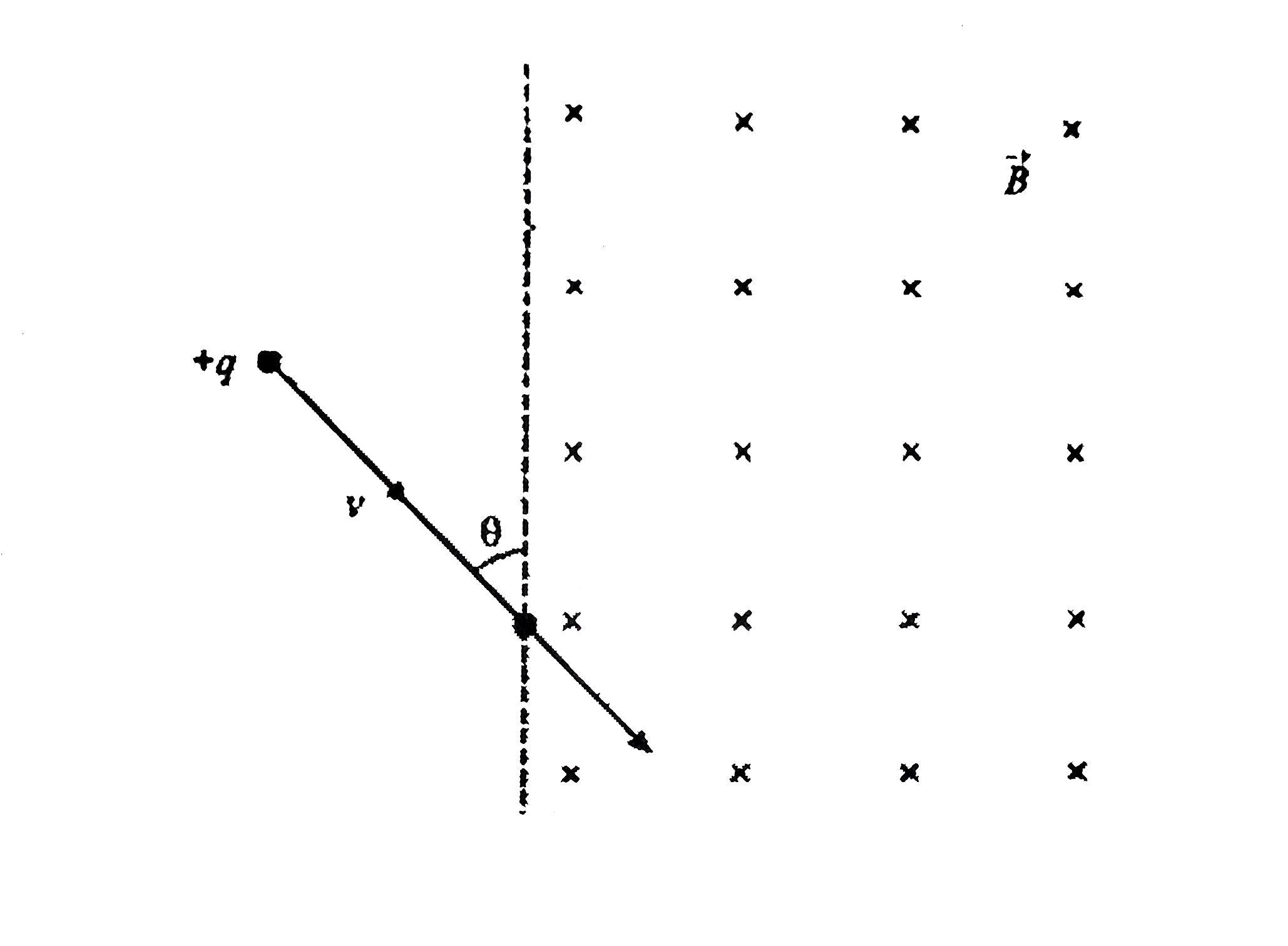A particle of mass m and charge q is accelerated through a potential differece V to a velocity →v towards south. The particle enters a region with both a magnetic field →B (pointing eastwards) and electric field →E (pointing downwards). The particle travels with a constant velocity through this region. The potential difference V through this region should be equal to
E/B
E/qB
2mE/qB
mE2/2qB2
The correct Answer is:D
qV=12mv2 or v=√2qV/m
The charged particle will be moving with constant velocity in both, the magnetic field and electric field if, qvB=qE or v=E/B
or √2qV/m=E/B or V=mE22qB2
Topper's Solved these Questions
- MAGNETIC EFFECT OF CURRENT AND MAGNETISMBOOK - PRADEEPCHAPTER - MAGNETIC EFFECT OF CURRENT AND MAGNETISMEXERCISE - Test Your Grip (a)
1 Videos
- MAGNETIC EFFECT OF CURRENT AND MAGNETISMBOOK - PRADEEPCHAPTER - MAGNETIC EFFECT OF CURRENT AND MAGNETISMEXERCISE - Test Your Grip (c)
1 Videos
- MAGNETIC EFFECT OF CURRENT AND MAGNETISMBOOK - PRADEEPCHAPTER - MAGNETIC EFFECT OF CURRENT AND MAGNETISMEXERCISE - Value Based Questions
2 Videos
- ELECTROSTATICSBOOK - PRADEEPCHAPTER - ELECTROSTATICSEXERCISE - ASSERTION-REASON TYPE QUESTIONS
2 Videos
- OPTICSBOOK - PRADEEPCHAPTER - OPTICSEXERCISE - Multiple choice questions
1 Videos
Similar Questions
A charged particle of mass m and charge q is accelerated through a potential difference of V volts. It enters a region of uniform magnetic field which is directed perpendicular to the direction of motion of the particle. Find the radius of circular path moved by the particle in magnetic field.
View SolutionA charge particle of mass m and charge q is accelerated by a potential difference V volt. It enters in a region of uniform magnetic field Bas shown in figure-4.93. Find the time after which it will come out from the magnetic field.

View Solution
Knowledge Check
A particle of mass 'm' and charge 'q' is accelerated through a potential difference of V volt, its energy will be
AqVBmqVC(qm)VDqmVA particle of mass 'm' and charge 'q' is accelerated through a potential difference of V volt, its energy will be
AqVBmqVC(qm)VDqmVA particle of mass m and charge q travels from rest through a potential difference V. Its final energy is
Aq VBmq VCq V/mDmq/V
An α - particle and a proton are accelerated through same potential difference. Find the ratio (va/vp) of velocities acquired by two particles.
View SolutionA particle of charges Q and mass m travels through a potential difference V from rest. The final momentum of the particle is
View SolutionA particle of mass m carrying charge q is accelerated by a potential difference V. It enters perpendicularly in a region of uniform magnetic field B and executes circular arc of radius R, then qm equals
View SolutionA charged particle of mass m and charge q is accelerated through a potential differences of V volts. It enters of uniform magnetic field B which is directed perpendicular to the direction of motion of the particle. The particle will move on a circular path of radius
View SolutionA particle of mass m and charge q enters a magnetic field B perpendicularly with a velocity v, The radius of the circular path described by it will be
View Solution
